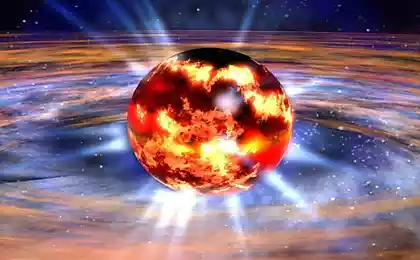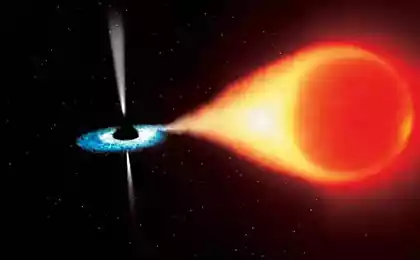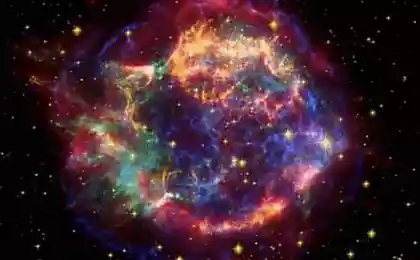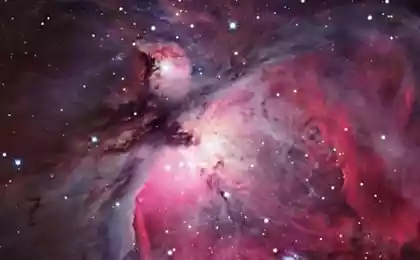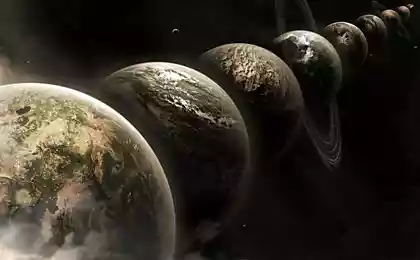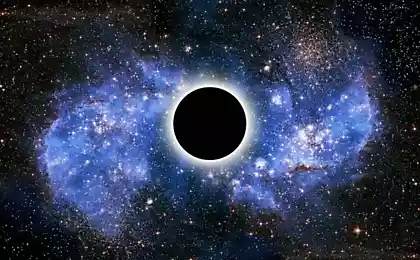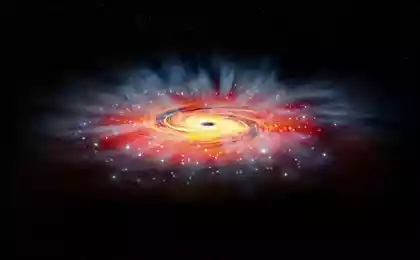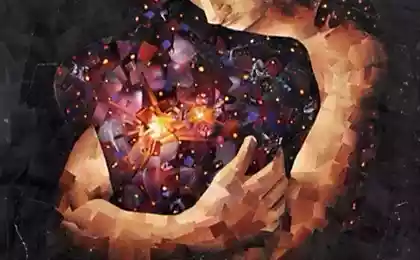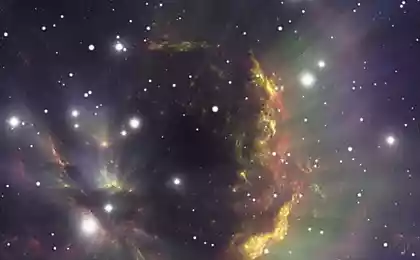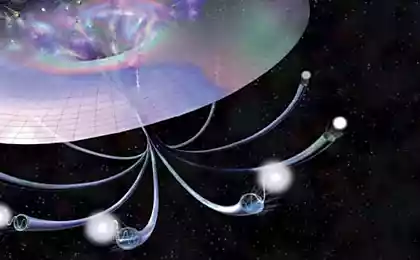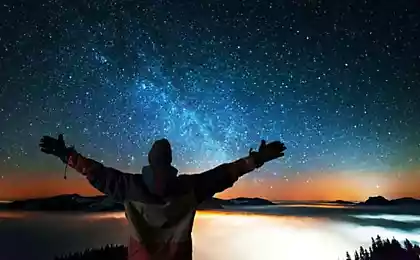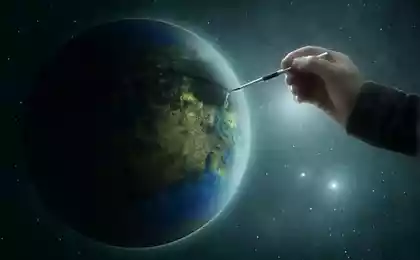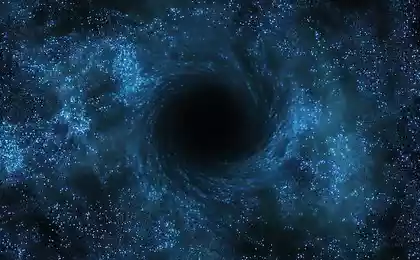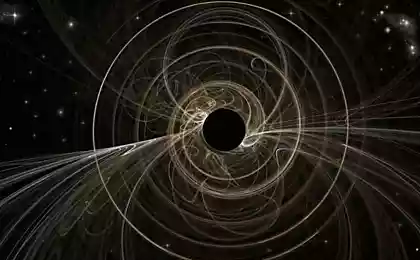184
Could tiny black holes cause the universe to collapse?
If you like the classic confrontation between two movie monsters like King Kong vs. Godzilla, you might like a new work combining two pseudoscientific alarmists on the topic of miniature black holes and vacuum collapse.
Physicists working with the world's largest particle accelerator - the Large Hadron Collider - assure the public that even if black holes appear there, they will not swallow the planet. They also allayed fears that a Higgs boson explosion could cause the vacuum of empty space to collapse.
However, the three theorists calculated that the chain reaction that a miniature black hole could cause would still cause collapse. Whose side is the truth on?
It should be noted that there is nothing to be afraid of. If such a scenario were possible, it could have happened long before humans came along. “You should not shout: nightmare, horror! We’re going to destroy the universe, says Ian Moss, a cosmological theorist at Newcastle University in the UK and author of the paper. Rather, he says, it suggests that some unknown physics is stabilizing the vacuum — rather than encouraging physicists to look for new data. Moss also admits that his work may be misunderstood: "I'm a little afraid that [a well-known theorist] John Ellis will accuse me of panicking.
Vacuum stability is a well-known problem. Since the discovery of the predicted Higgs boson in 2012, physicists have known that empty space contains a "Higgs field," a bit like an electric field that consists of Higgs bosons "virtually" lurking in a vacuum. Other fundamental particles, such as electrons and quarks, interact with this field and acquire mass. However, particle physicists have calculated that given the known Standard Model of elementary particles and the measured mass of the Higgs boson, the Higgs field may not be in the most stable low-energy state. Rather, it can reach lower energies if it acquires a higher force. And this energy-conserving transition could inevitably lead to the collapse of the vacuum and the end of our universe.
Why didn't this collapse happen? It turns out that to get to the lower energy state of the “true vacuum,” the Higgs field must overcome a giant energy barrier through a process known as quantum tunneling. This barrier is so large that it will take very, very many years, much longer than the age of the universe, for such a transition to occur. Theorists came to the conclusion that the Higgs field is “metastable”, temporarily “stuck” in a state of “false vacuum”, and the problem of vacuum collapse should not be experienced in principle.
But now, Moss and theoretical physicists Philip Burda and Ruth Gregory of Durham University in the UK argue that this argument falls apart when you add microscopic black holes to it - miniature regions of space whose gravity is so strong that even light cannot escape them. Miniature black holes can act as a “grain” that triggers the formation of a bubble of true vacuum in a sea of false vacuum, similar to how a grain of sand can cause the formation of a bubble of steam in boiling water. The scientists explained their findings in a paper published by Physical Review Letters.
Without such a grain, the bubble of true vacuum will inevitably disappear. This is because, although the vacuum inside the bubble has a lower energy than the vacuum outside the bubble, the wall of this bubble separating the two types of vacuum has a very high energy. Therefore, such a bubble can reduce the total energy as it decreases and disappears. For a bubble with a tiny black hole inside, the scenario would be different. The gravity of a black hole will change the energy balance, according to Moss, so any bubble of fairly small size can reduce energy through growth. Such a bubble can expand in a fraction of a second and engulf the visible universe.
These black holes must be small and are likely to come from two sources. They may be primordial black holes left over from the birth of the universe. Or they could be microscopic black holes created by colliding particles at the LHC.
Should we be worried? Moss says no. The fact that the universe has been around for 13.8 billion years suggests that primordial black holes cannot trigger such a collapse. As for the LHC’s black holes, even if they can be created, they won’t create chaos. As evidence, we can cite cosmic rays that crash into the atmosphere and create even higher energies of particle collisions than allowed by the LHC. Thus, even if such collisions produce black holes, these black holes cannot cause the vacuum to collapse, otherwise the cosmos would have evaporated long ago.
But the most important thing, says Moss, is that theorists will no longer be able to dismiss the problem, believing that the collapse of the vacuum will take a very long time. By demonstrating – according to the Standard Model – that collapse must be rapid, Moss’s work points in the direction of some new physics that should stabilize the vacuum.
Others do not find this argument so convincing. Theorists point to a number of questionable assumptions in the mathematical model of the work, says Vincenzo Brancina, a theorist at the National Institute of Nuclear Energy at the University of Catania. John Ellis, a theorist at King's College London, questions the consistency of the calculation. For example, he says, it suggests that the Standard Model works correctly at high energy scales. But the only way to create a miniature black hole at the LHC is if the Standard Model cracks and space opens up new dimensions at much lower energies. However, both Branchina and Ellis suspect there is something that makes the vacuum stable. published
P.S. And remember, just changing our consumption – together we change the world!
Source: hi-news.ru/science/mogut-li-kroshechnye-chernye-dyry-mogut-privesti-k-kollapsu-vselennoj.html
Physicists working with the world's largest particle accelerator - the Large Hadron Collider - assure the public that even if black holes appear there, they will not swallow the planet. They also allayed fears that a Higgs boson explosion could cause the vacuum of empty space to collapse.
However, the three theorists calculated that the chain reaction that a miniature black hole could cause would still cause collapse. Whose side is the truth on?
It should be noted that there is nothing to be afraid of. If such a scenario were possible, it could have happened long before humans came along. “You should not shout: nightmare, horror! We’re going to destroy the universe, says Ian Moss, a cosmological theorist at Newcastle University in the UK and author of the paper. Rather, he says, it suggests that some unknown physics is stabilizing the vacuum — rather than encouraging physicists to look for new data. Moss also admits that his work may be misunderstood: "I'm a little afraid that [a well-known theorist] John Ellis will accuse me of panicking.
Vacuum stability is a well-known problem. Since the discovery of the predicted Higgs boson in 2012, physicists have known that empty space contains a "Higgs field," a bit like an electric field that consists of Higgs bosons "virtually" lurking in a vacuum. Other fundamental particles, such as electrons and quarks, interact with this field and acquire mass. However, particle physicists have calculated that given the known Standard Model of elementary particles and the measured mass of the Higgs boson, the Higgs field may not be in the most stable low-energy state. Rather, it can reach lower energies if it acquires a higher force. And this energy-conserving transition could inevitably lead to the collapse of the vacuum and the end of our universe.
Why didn't this collapse happen? It turns out that to get to the lower energy state of the “true vacuum,” the Higgs field must overcome a giant energy barrier through a process known as quantum tunneling. This barrier is so large that it will take very, very many years, much longer than the age of the universe, for such a transition to occur. Theorists came to the conclusion that the Higgs field is “metastable”, temporarily “stuck” in a state of “false vacuum”, and the problem of vacuum collapse should not be experienced in principle.
But now, Moss and theoretical physicists Philip Burda and Ruth Gregory of Durham University in the UK argue that this argument falls apart when you add microscopic black holes to it - miniature regions of space whose gravity is so strong that even light cannot escape them. Miniature black holes can act as a “grain” that triggers the formation of a bubble of true vacuum in a sea of false vacuum, similar to how a grain of sand can cause the formation of a bubble of steam in boiling water. The scientists explained their findings in a paper published by Physical Review Letters.
Without such a grain, the bubble of true vacuum will inevitably disappear. This is because, although the vacuum inside the bubble has a lower energy than the vacuum outside the bubble, the wall of this bubble separating the two types of vacuum has a very high energy. Therefore, such a bubble can reduce the total energy as it decreases and disappears. For a bubble with a tiny black hole inside, the scenario would be different. The gravity of a black hole will change the energy balance, according to Moss, so any bubble of fairly small size can reduce energy through growth. Such a bubble can expand in a fraction of a second and engulf the visible universe.
These black holes must be small and are likely to come from two sources. They may be primordial black holes left over from the birth of the universe. Or they could be microscopic black holes created by colliding particles at the LHC.
Should we be worried? Moss says no. The fact that the universe has been around for 13.8 billion years suggests that primordial black holes cannot trigger such a collapse. As for the LHC’s black holes, even if they can be created, they won’t create chaos. As evidence, we can cite cosmic rays that crash into the atmosphere and create even higher energies of particle collisions than allowed by the LHC. Thus, even if such collisions produce black holes, these black holes cannot cause the vacuum to collapse, otherwise the cosmos would have evaporated long ago.
But the most important thing, says Moss, is that theorists will no longer be able to dismiss the problem, believing that the collapse of the vacuum will take a very long time. By demonstrating – according to the Standard Model – that collapse must be rapid, Moss’s work points in the direction of some new physics that should stabilize the vacuum.
Others do not find this argument so convincing. Theorists point to a number of questionable assumptions in the mathematical model of the work, says Vincenzo Brancina, a theorist at the National Institute of Nuclear Energy at the University of Catania. John Ellis, a theorist at King's College London, questions the consistency of the calculation. For example, he says, it suggests that the Standard Model works correctly at high energy scales. But the only way to create a miniature black hole at the LHC is if the Standard Model cracks and space opens up new dimensions at much lower energies. However, both Branchina and Ellis suspect there is something that makes the vacuum stable. published
P.S. And remember, just changing our consumption – together we change the world!
Source: hi-news.ru/science/mogut-li-kroshechnye-chernye-dyry-mogut-privesti-k-kollapsu-vselennoj.html
The phenomenon of school parents. Technique productive intervention
Never a fantasy: mining resources in space

